| Making French game pâtés & terrines... |
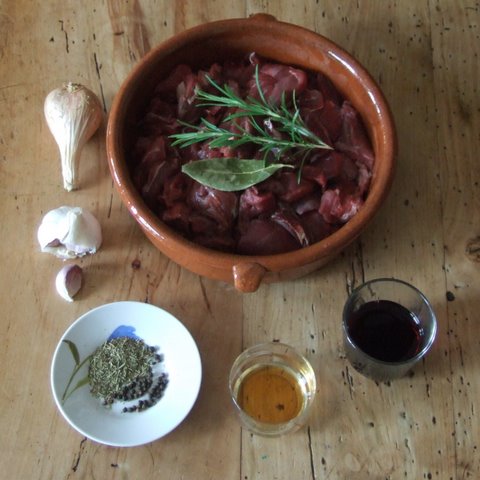
Ingredients ready for a pâté
session...
Basic, game "pâté" recipe
The
principle of all
game pâtés is to combine lean and tasty meat with
a smaller proportion of prime quality pork fat. By pork fat we do not
mean pure fat
but a fat part of the hog. The "throat bacon" is the best
but not often on sale at retailers as it is the main raw
material of the salamis, sausages etc.. Darker and tastier
pâtés are obtained if another smaller proportion of liver
is added. Game liver is perfect but can be replaced by pork
or poultry livers.
Pâtés are very useful to nicely
use the less noble parts of the venison or the bird's legs.
Pâtés particularly accomodate the
tough guys like pigeon, duck or goose and also hare and rabbit. Home
made
pâtés can be prepared in 3 styles: 1/ The "Terrine", is
the preparation cooked in a special oval shaped earthenware pot. Small
terrines
exist for 250 or 300 grs but it is common to make big terrines of 1 or
2 kgs serving quite a number of guests. 2/ The "Pâté"
is the same preparation cooked in a pie crust. In France if it takes a
round shape it will be named
a "tourte". If it keeps the classic rectangular shape it is named
"Pâté en croûte". & 3/ Your pâté or
terrine preparation can become a preserve if cooked and sterilized into
those jars with a lid or rubber gasket.
Making preserved deer pâté...

The
day before I marinate 1 kilo of venison from a leg of red
deer with a small glass of red wine, an even smaller glass of armagnac,
a small chopped schallot (an onion would work), a crushed half clove of
garlic, a bay leaf, rosemary, peppercorns and thyme.
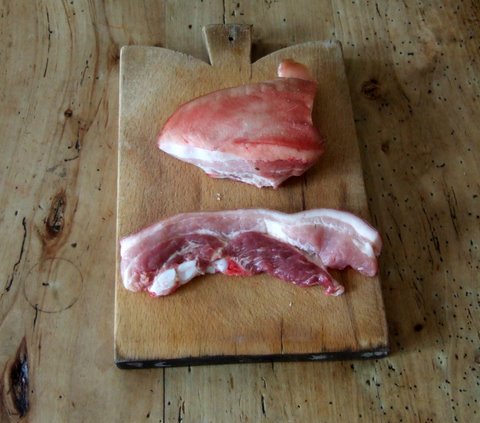
In
this case I
have bought 250 grs of fresh rather fat "throat bacon" and a 100 grs
slice of fresh normal and leaner bacon. By "fresh", I mean not smoked
or salted in a brine. Just raw meat.
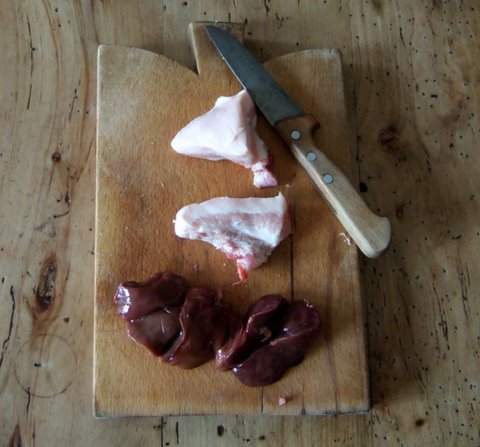
I
buy the bacon with its skin (crackling),
separate bacon and skin but keep the skin. I have bought also 200 grs
of chicken liver. Cut all the bacon and liver into small cubes.
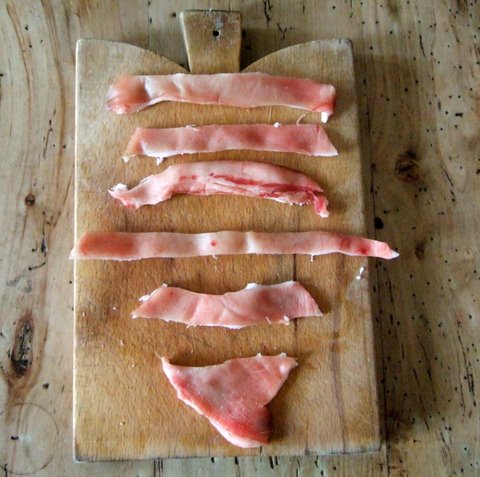
I
make strips of the bacon skin. In the jars there will be a liquid gravy
juice at
the end of the cooking time and this juice must be turned into a
"jelly".
The simplest way to obtain this jelly is to place strips
of skin of the bacon that you had cut off in the bottom
of the
jars .
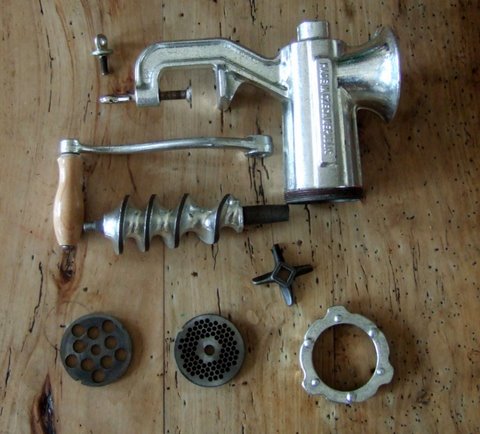
The
biggest holes of grinder are used with tender meats, like tender
fillet or bird's breasts. Very tender birds can be simply choped with a
knife making small pieces. Tough meats are ground with the thinner
holes or even with an electric mixer or cutter but hand grinding
usually gives a nicer result, and the pâtés made with the
biggest holes are the most appreciated by connoisseurs.
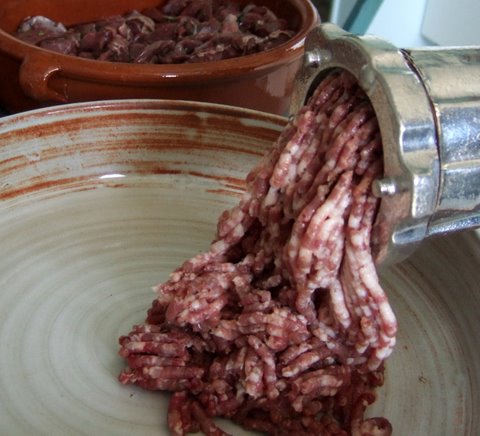
Get
rid of the marinade surplus and grind everything with an electric
or hand machine like above.
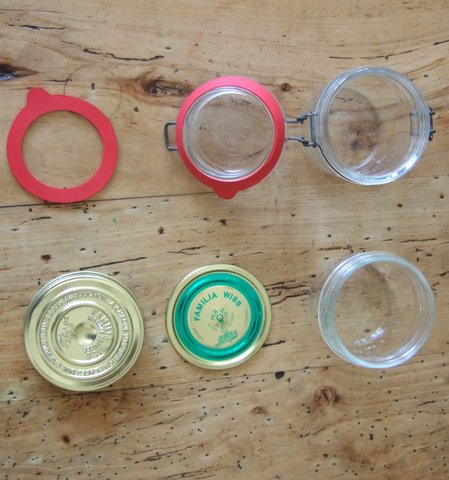
Use
an average size of jars of 350 grs. There are other convenient
sizes of
150 & 500 grs. You can use those with rubber gaskets or those with
a lid, it makes no difference except that the lid is often easier to
open by simply making a small hole in it with the point of a knife.
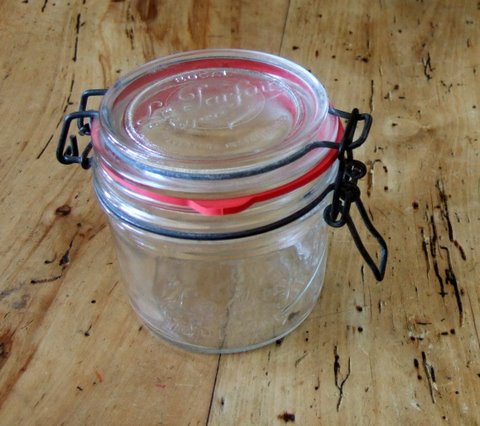
The old classic "Le Parfait" jar.
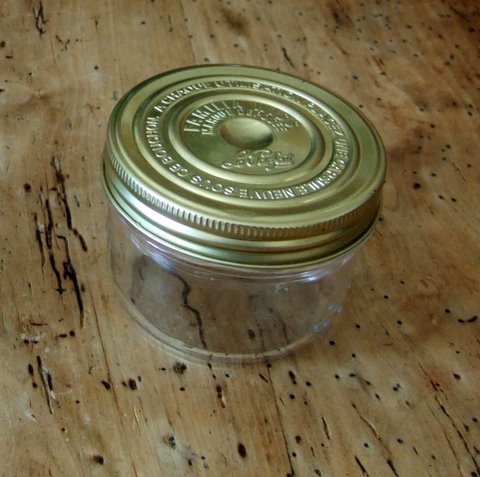
... and the other classic "Familia Wiss" are both on the same website
at www.leparfait.com

Now
we are having roughly 1.500 grs of ground meat ready for
seasoning. The most important is the salt: 15 to 20 grs per
kilo. I am using table spoons containing each roughly 5 grs of
salt. In this
case I would put 5 spoons of salt.

The
trick to be sure of the quantity of salt even if you are
interrupted during your work is to put each spoon separately
before mixing. An egg
by kilo must be added as well. For 1500 grs I would only put 1 egg. I
would only add a second egg if we had reached 2 kilos of ground
meat.
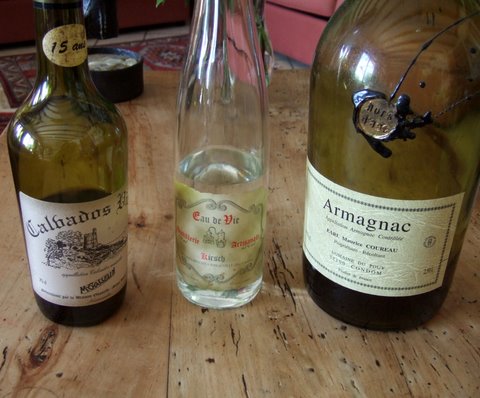
At
this stage you can add also another big spoon of brandy like cognac or
armagnac. There are regional variants with calvados
or kirsch or other fruit brandies but the most classic flavor is given
by armagnac.
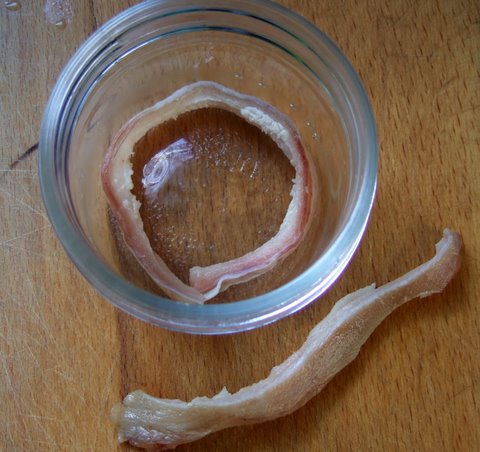
As
said above, the simplest way to obtain a nice jelly is to place in the
bottom of each
jar a strip of the skin of the bacon. If you were not doing
this your pâté would be bathing
in a juice instead of being nicely held together by the jelly.
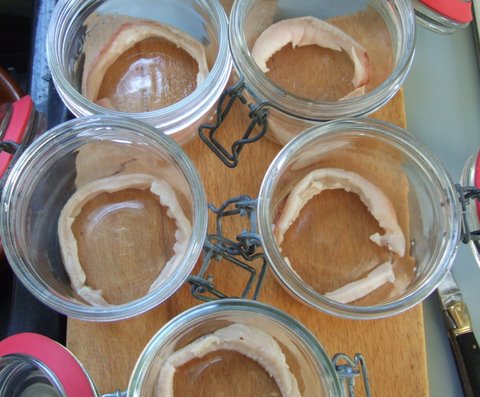
Each
jar is filled with a piece of skin. There are also
artificial ways to obtain this jelly: A half sheet of wet gelatin
can be placed
in the bottom before filling the jars with meat. Otherwise there are
powders that can be mixed like the Gelée
au Madère by Maggi.
It is a gold coloured pre mix seasonned and flavoured with Madeira
wine. Though the bacon skin is the easiest to handle and the result is
always good.
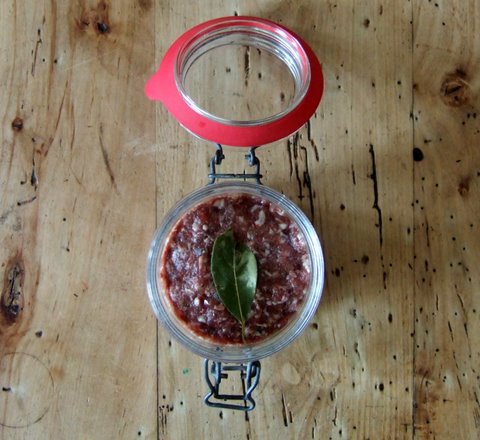
The jars are now ready to close and cook.
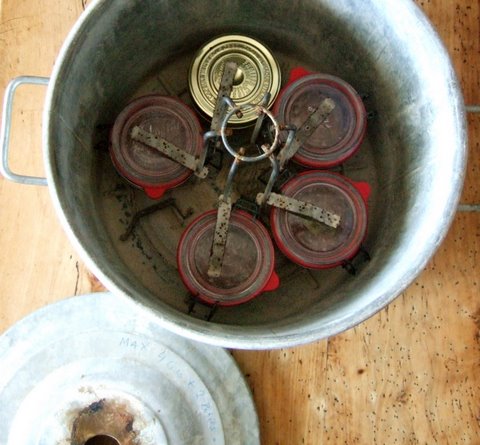
The
jars must now be boiled in water for 3 hours. They are placed in a
cooking device that will hopefully not let them wander around and dance
during the sterilizing process.
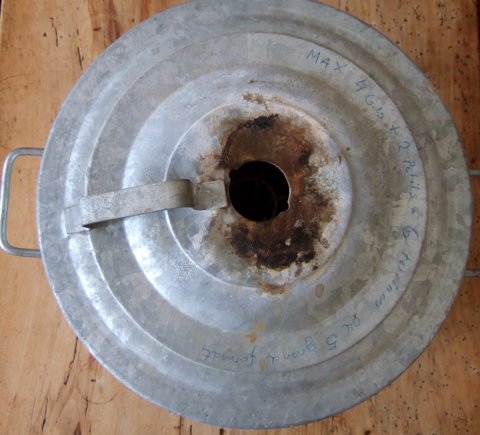
Replace the cover to boil. The hole is
supposed to let you pass a thermometer to control the temperature. I
personally sterilize my jars during 3 hours. Using a pressure cooker
reduces the necessary time but take no risk. Always check the
charts available in books or on internet and respect the length and
temperatures that will kill all bacterias.
Supplies
for a big picnic !
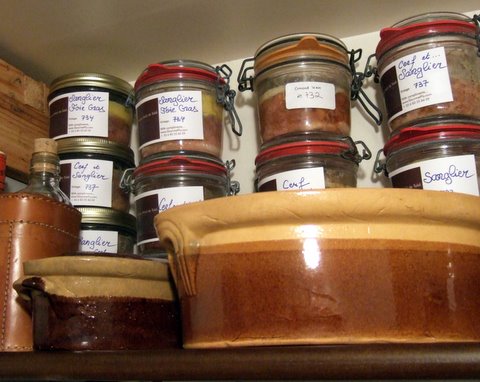
Preserved Le
Parfait jars and old style terrine...
Traditional
"pâté en croûte" of Camalés
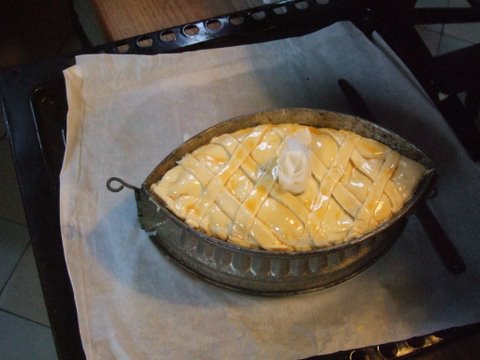
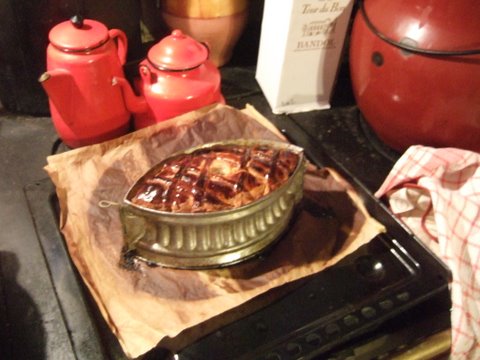

With love... Avril 2010
Homepage
Contact
Back to top
Details about the class to learn this